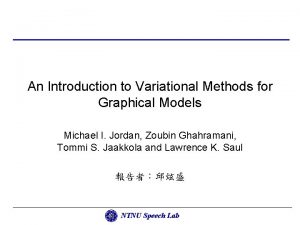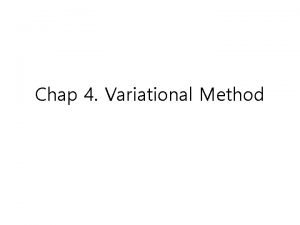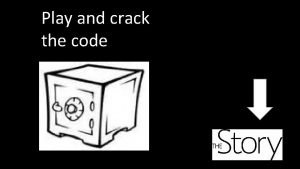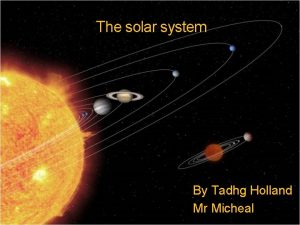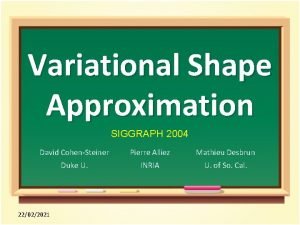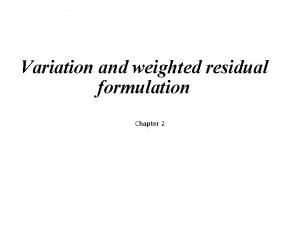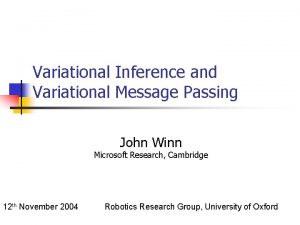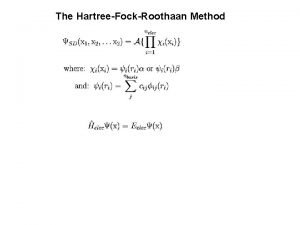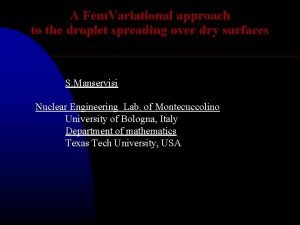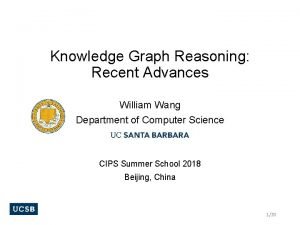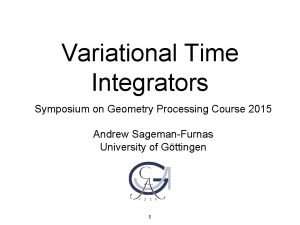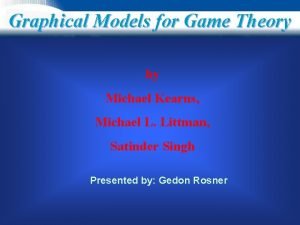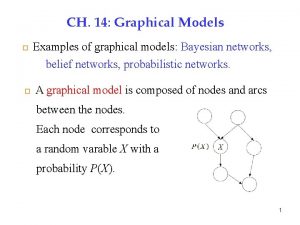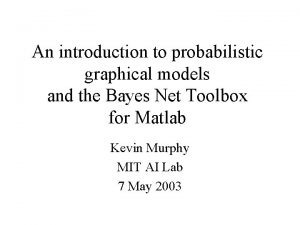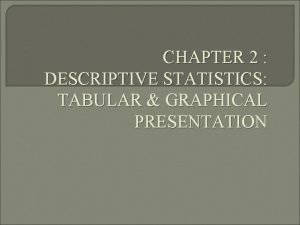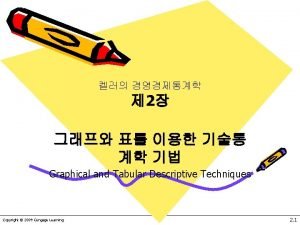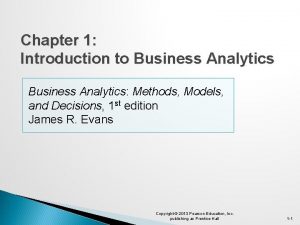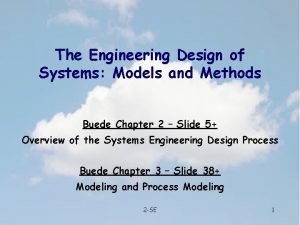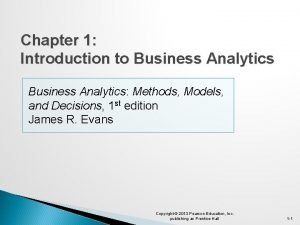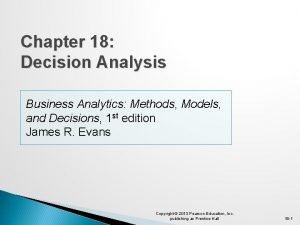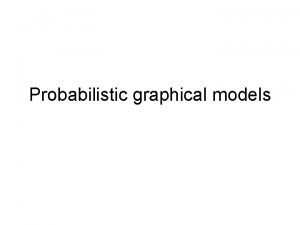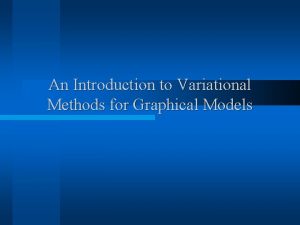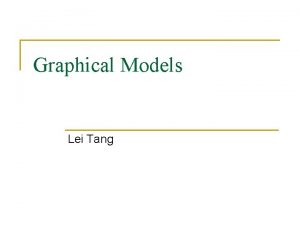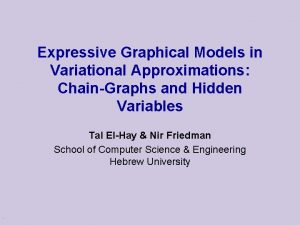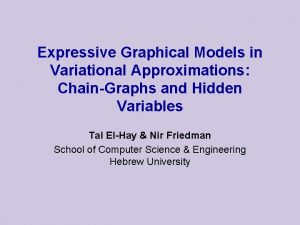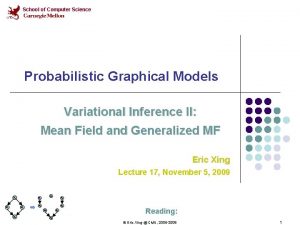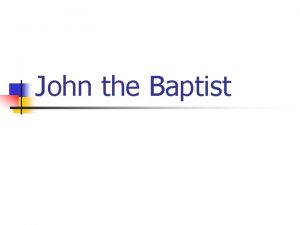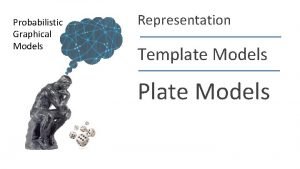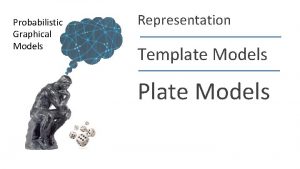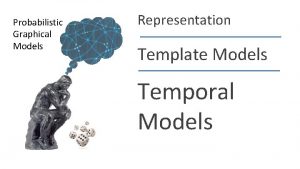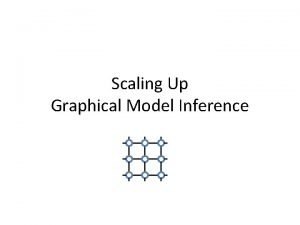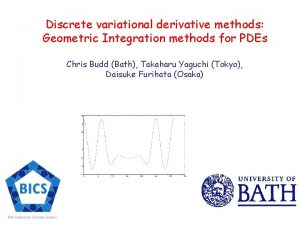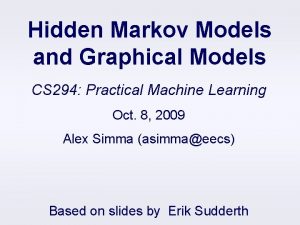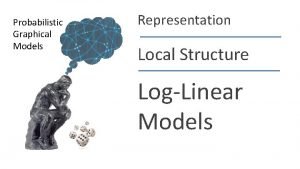Variational Methods for Graphical Models Micheal I Jordan






























































- Slides: 62

Variational Methods for Graphical Models Micheal I. Jordan Zoubin Ghahramani Tommi S. Jaakkola Lawrence K. Saul Presented by: Afsaneh Shirazi

Outline • • Motivation Inference in graphical models Exact inference is intractable Variational methodology – Sequential approach – Block approach • Conclusions 2

Motivation (Example: Medical Diagnosis) diseases What is the most probable disease? symptoms 3

Motivation • We want to answer some queries about our data • Graphical model is a way to model data • Inference in some graphical models is intractable (NP-hard) • Variational methods simplify the inference in graphical models by using approximation 4

Graphical Models • Directed (Bayesian network) P(S 1) S 1 P(S 3|S 1, S 2) S 4 P(S 4|S 3) S 5 P(S 5|S 3, S 4) S 3 P(S 2) S 2 • Undirected (C 1) (C 3) (C 2) 5

Inference in Graphical Models Inference: Given a graphical model, the process of computing answers to queries • How computationally hard is this decision problem? • Theorem: Computing P(X = x) in a Bayesian network is NP-hard 6

Why Exact Inference is Intractable? diseases Diagnose the most probable disease symptoms 7

Why Exact Inference is Intractable? diseases : Observed symptoms 8

Why Exact Inference is Intractable? diseases 1 0 1 : Noisy-OR model symptoms 9

Why Exact Inference is Intractable? diseases 1 0 1 : Noisy-OR model symptoms 10

Why Exact Inference is Intractable? 11

Why Exact Inference is Intractable? diseases : Observed symptoms 12

Why Exact Inference is Intractable? diseases : Observed symptoms 13

Reducing the Computational Complexity Variational Methods Approximate the probability distribution Simple graph for exact methods Use the role of convexity 14

Express a Function Variationally • is a concave function 15

Express a Function Variationally • is a concave function 16

Express a Function Variationally • If the function is not convex or concave: transform the function to a desired form • Example: logistic function Transforming back Transformation Approximation 17

Approaches to Variational Methods • Sequential Approach: (on-line) nodes are transformed in an order, determined during inference process • Block Approach: (off-line) has obvious substructures 18

Sequential Approach (Two Methods) Untransformed Graph Transform one node at a time Completely transformed Graph Reintroduce one node at a time Simple Graph for exact methods 19

Sequential Approach (Example) diseases Log Concave symptoms 20

Sequential Approach (Example) diseases Log Concave symptoms 21

Sequential Approach (Example) diseases 1 symptoms 22

Sequential Approach (Example) diseases 1 symptoms 23

Sequential Approach (Example) diseases 1 symptoms 24

Sequential Approach (Upper Bound and Lower Bound) • We need both lower bound and upper bound 25

How to Compute Lower Bound for a Concave Function? • Lower bound for concave functions: Variational parameter is probability distribution 26

Block Approach (Overview) • Off-line application of sequential approach – Identify some structure amenable to exact inference – Family of probability distribution via introduction of parameters – Choose best approximation based on evidence 27

Block Approach (Details) Minimize KL divergence Family of • KL divergence 28

Block Approach (Example – Boltzmann machine) Si Sj 29

Block Approach (Example – Boltzmann machine) Si Sj=1 30

Block Approach (Example – Boltzmann machine) si sj 31

Block Approach (Example – Boltzmann machine) Minimize KL Divergence si sj 32

Block Approach (Example – Boltzmann machine) Minimize KL Divergence si sj Mean field equations: solve for fixed point 33

Conclusions • Time or space complexity of exact calculation is unacceptable • Complex graphs can be probabilistically simple • Inference in simplified models provides bounds on probabilities in the original model 34

35

Extra Slides 36

Concerns • • Approximation accuracy Strong dependencies can be identified Not based on convexity transformation Not able to assure that the framework will transfer to other examples • Not straightforward to develop a variational approximation for new architectures 37

Justification for KL Divergence • Best lower bound on the probability of the evidence 38

EM • Maximum likelihood parameter estimation: • Following function is the lower bound on log likelihood KL Divergence between Q(H|E) and P(H|E, ) 39

EM 1. Maximize the bound with respect to Q 2. Fix Q, maximize with respect to Approximation to EM Traditional EM algorithm 40

Principle of Inference DAG Junction Tree Initialization Inconsistent Junction Tree Propagation Consistent Junction Tree Marginalization 41

Example: Create Join Tree HMM with 2 time steps: X 1 X 2 Y 1 Y 2 Junction Tree: X 1, Y 1 X 1, X 2 X 2, Y 2 42

Example: Initialization X 1, Y 1 X 1, X 2 Variable Associated Cluster X 1, Y 1 X 2 X 1, X 2 Y 2 X 2, Y 2 Potential function 43

Example: Collect Evidence • Choose arbitrary clique, e. g. X 1, X 2, where all potential functions will be collected. • Call recursively neighboring cliques for messages: • 1. Call X 1, Y 1. – 1. Projection: – 2. Absorption: 44

Example: Collect Evidence (cont. ) • 2. Call X 2, Y 2: – 1. Projection: – 2. Absorption: X 1, Y 1 X 1, X 2 X 2, Y 2 45

Example: Distribute Evidence • Pass messages recursively to neighboring nodes • Pass message from X 1, X 2 to X 1, Y 1: – 1. Projection: – 2. Absorption: 46

Example: Distribute Evidence (cont. ) • Pass message from X 1, X 2 to X 2, Y 2: – 1. Projection: – 2. Absorption: X 1, Y 1 X 1, X 2 X 2, Y 2 47

Example: Inference with evidence • Assume we want to compute: P(X 2|Y 1=0, Y 2=1) (state estimation) • Assign likelihoods to the potential functions during initialization: 48

Example: Inference with evidence (cont. ) • Repeating the same steps as in the previous case, we obtain: 49

Variable Elimination General idea: • Write query in the form • Iteratively – Move all irrelevant terms outside of innermost sum – Perform innermost sum, getting a new term – Insert the new term into the product 50

Complexity of variable elimination • Suppose in one elimination step we compute This requires • • multiplications additions Complexity is exponential in number of variables in the intermediate factor 51

Chordal Graphs • elimination ordering undirected chordal graph S V L T X D L T B A S V B A X D Graph: • Maximal cliques are factors in elimination • Factors in elimination are cliques in the graph • Complexity is exponential in size of the largest clique in graph 52

Induced Width • The size of the largest clique in the induced graph is thus an indicator for the complexity of variable elimination • This quantity is called the induced width of a graph according to the specified ordering • Finding a good ordering for a graph is equivalent to finding the minimal induced width of the graph 53

Properties of Junction Trees • In every junction tree: – For each cluster (or sepset) , – The probability distribution of any variable , using any cluster (or sepset) that contains 54

Exact inference Using Junction Trees • Undirected tree • Each node is a cluster • Running intersection property: – Given two clusters and , all clusters on the path between and contain • Separator sets (sepsets): – Intersection of adjacent clusters ABD Cluster ABD AD ADE Sepset DE DE DEF 55

Constructing Junction Trees X 4 Marrying Parents X 2 X 1 X 6 X 3 X 5 56

Moral Graph X 4 X 2 X 1 X 6 X 3 X 5 57

Triangulation X 4 X 2 X 1 X 6 X 3 X 5 58

Identify Cliques X 4 X 2 X 1 X 6 X 3 X 1 X 2 X 3 X 2 X 5 X 6 X 2 X 3 X 5 X 2 X 4 X 5 59

Junction Tree • Junction tree is a subgraph of the clique graph satisfying the running intersection property X 1 X 2 X 3 X 5 X 1 X 2 X 3 X 2 X 5 X 6 X 2 X 3 X 5 X 2 X 4 X 2 X 5 X 6 X 2 X 4 60

Constructing Junction Trees DAG Moral Graph Triangulated Graph Identify Cliques Junction Tree 61

Sequential Approach (Example) • Lower bound for medical diagnosis ex: 62
 An introduction to variational methods for graphical models
An introduction to variational methods for graphical models Variational principle
Variational principle Linear programming models graphical and computer methods
Linear programming models graphical and computer methods Tindakan sir harold macmichael
Tindakan sir harold macmichael Micheal jacksonn
Micheal jacksonn Micheal keatan
Micheal keatan Mason nagy
Mason nagy Micheal keatan
Micheal keatan Variational shape approximation
Variational shape approximation Variational calculus
Variational calculus Variational message passing
Variational message passing Hamiltonian operator
Hamiltonian operator Reboundd
Reboundd Variational knowledge graph reasoning
Variational knowledge graph reasoning D'alembert
D'alembert Graphical models for game theory
Graphical models for game theory Example of graphical model
Example of graphical model An introduction to probabilistic graphical models
An introduction to probabilistic graphical models Tabular presentation of quantitative data
Tabular presentation of quantitative data Graphical and numerical methods
Graphical and numerical methods Tabular and graphical methods
Tabular and graphical methods Semimodals
Semimodals Scope of business analytics
Scope of business analytics The engineering design of systems: models and methods
The engineering design of systems: models and methods Business analytics methods models and decisions
Business analytics methods models and decisions Decision tree business analytics
Decision tree business analytics Indirect methods of contoring uses how many methods
Indirect methods of contoring uses how many methods Offentlig förvaltning
Offentlig förvaltning Argument för teckenspråk som minoritetsspråk
Argument för teckenspråk som minoritetsspråk Ledarskapsteorier
Ledarskapsteorier Datorkunskap för nybörjare
Datorkunskap för nybörjare Ellika andolf
Ellika andolf Returpilarna
Returpilarna Rita perspektiv
Rita perspektiv Fspos
Fspos Ministerstyre för och nackdelar
Ministerstyre för och nackdelar Redogör för vad psykologi är
Redogör för vad psykologi är Bästa kameran för astrofoto
Bästa kameran för astrofoto Tillitsbaserad ledning
Tillitsbaserad ledning Gumman cirkel
Gumman cirkel Klassens mamma rim
Klassens mamma rim Nyckelkompetenser för livslångt lärande
Nyckelkompetenser för livslångt lärande Fredsgudinna pax
Fredsgudinna pax Personlig tidbok
Personlig tidbok Mästar lärling modellen
Mästar lärling modellen Orubbliga rättigheter
Orubbliga rättigheter Jätte råtta
Jätte råtta Verktyg för automatisering av utbetalningar
Verktyg för automatisering av utbetalningar Vem räknas som jude
Vem räknas som jude Aktiv expektans
Aktiv expektans Boverket ka
Boverket ka Romarriket tidslinje
Romarriket tidslinje Shingelfrisyren
Shingelfrisyren Vad är verksamhetsanalys
Vad är verksamhetsanalys Typiska drag för en novell
Typiska drag för en novell Tack för att ni har lyssnat
Tack för att ni har lyssnat Stål för stötfångarsystem
Stål för stötfångarsystem Centrum för kunskap och säkerhet
Centrum för kunskap och säkerhet Shivaismen
Shivaismen I gullregnens månad
I gullregnens månad Inköpsprocessen steg för steg
Inköpsprocessen steg för steg Påbyggnader för flakfordon
Påbyggnader för flakfordon Egg för emanuel
Egg för emanuel
